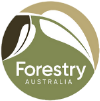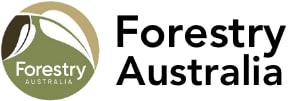
OPINION: Why support native forestry?
Native forest timber harvesting sparks significant emotion, passion and energy. Differences of opinion around the issue have been ongoing in Australia for decades. However, the irony is that regardless of ‘sides’, we all care deeply about forests. We want to see biodiversity flourish, we want to prevent devastating bushfires, we want to be sustainable, and we want to find solutions to climate change. We recognise the dire need to manage our forests better for the health and prosperity of our environment and society.
Sustainable native forest harvesting represents a temporary disturbance. Each area subject to native forest harvesting in Australia is required by law to be regenerated back to native forest, thereby maintaining forests in perpetuity. As a result, native forest harvesting operations do not represent deforestation, nor do they lead to permanent forest cover loss.
Calls to end native forest harvesting are usually based around three key themes: protecting biodiversity, reducing fire risk and combatting climate change. These are absolutely key challenges in our forests, but there is no universally accepted evidence that simply ending native forest harvesting in Australia will provide biodiversity protection, reduce catastrophic bushfire risk or ensure that our diverse forest ecosystems are healthy and more resilient to impacts from climate change. There is, however, a high risk of multiple unintended negative consequences from such calls.
Biodiversity declines and local extinctions continue to occur across the country, including in many of Australia’s formally protected reserves. The reality is that aspirations to ‘protect’ do not guarantee conservation or act to reduce many key threats. Despite the common misconception that timber harvesting ubiquitously destroys biodiversity, in many instances (including in the high-profile case of Koalas) the scientific evidence tells us otherwise – that appropriate, regulated harvesting followed by regeneration can be compatible with conservation. Importantly, there are many harvesting techniques that can be used to restore and build resilience into degraded habitats that risk being lost from our forest management toolkit if we implement blanket bans of native forest harvesting.
Further, more frequent intense bushfires are the greatest threat to biodiversity. The experience of forest managers over decades clearly shows that, to reduce this threat, fire must be managed ongoing at a landscape scale by professionally trained, experienced, and accredited forest fire managers. Infrastructure, skills and equipment, currently provided by the forestry sector, is critical to this effort and is at real risk of being lost as the native forest harvesting workforce declines. There is no academic consensus or landscape evidence that timber harvesting increases fire risk, as some have claimed. However, the loss of skills and resources that results from timber industry closures does represent a tangible increase in bushfire risk to communities.
Importantly, native forest harvesting provides capacity to combat climate change. According to Australia’s national accounts, actively managed forests are already a sink for carbon across Australia due to the carbon absorbing power of growing trees. Internationally, countries have recognised the importance of and their responsibility to manage their forests to meet domestic demand for forest products locally. This is part of the solution to climate change through establishing bio-economies based on sustainable biomass and timber. Increasing local demand, while simultaneously reducing timber harvesting from Australian forests, is already causing timber imports to increase, with associated high emissions costs; and creating increased reliance on non-renewable plastic, concrete and steel.
Claims that Australia has sufficient plantations to replace the timber we currently source from native forests are incorrect. Further, the plantations we do have cannot yet provide, at the required scale, the beautiful native timbers that are desired for modern environmentally-friendly Australian buildings. There are very real reasons, including land price and availability, investment impediments and required long timeframes that mean a transition to plantations is not readily achievable. We absolutely need to find ways to grow more plantations, but we also need limited, well-regulated regenerative forestry in our native forests to meet local needs and care for the environment.
To be clear, support for native forest harvesting is not an argument for the status quo. Change is needed to arrest the current trajectory of increasing threats to forests from invasive species, bushfires and climate change. Rather, this support is a call to wisely use science-based active and adaptive forest management to create a better future. This science includes the knowledge of Indigenous Australians. Listening and learning together we must keep an open mind, keep our options open and find ways to work together to make our forests healthy again.
Dr Michelle Freeman, President, Forestry Australia

